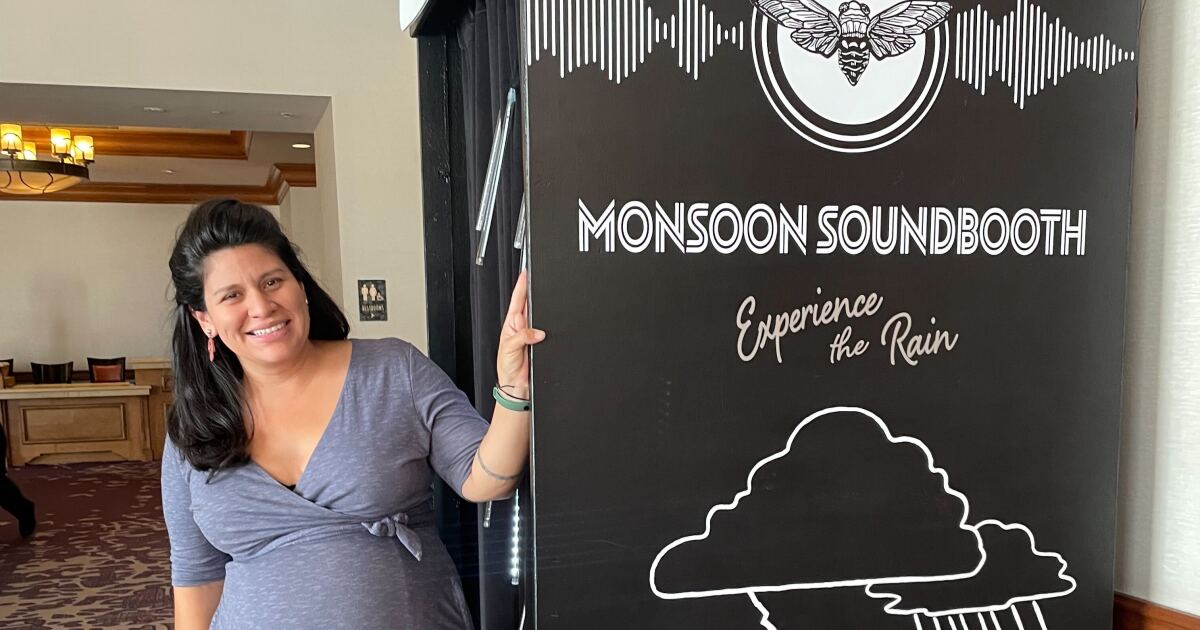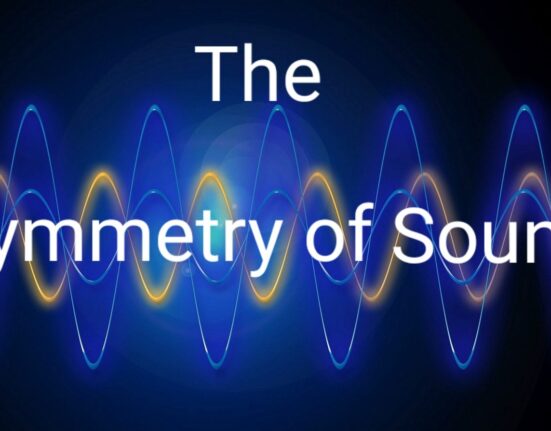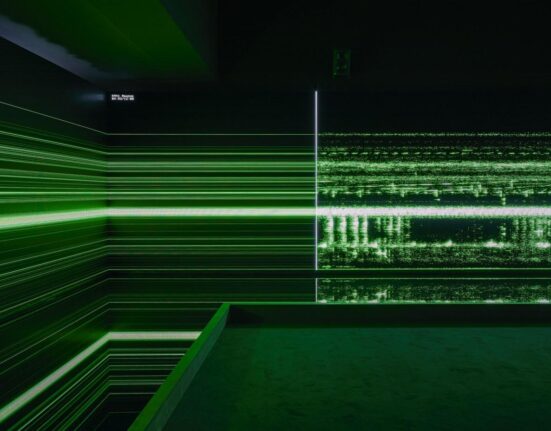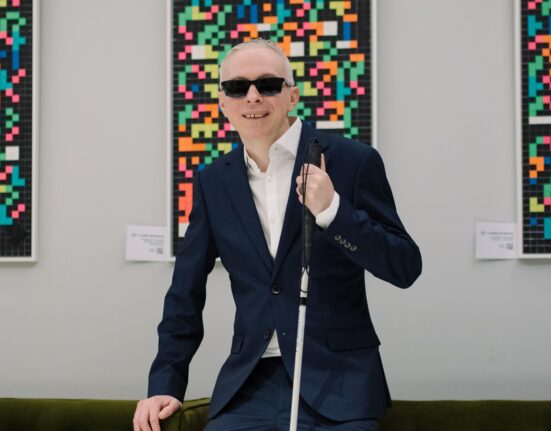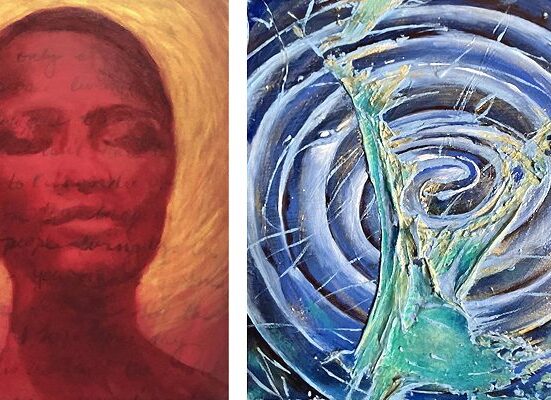Sitting outside the conference rooms at the annual One Water Summit in Tucson is a tall, black box decorated with tubes of lights and clouds. Pull back the curtain andthe sounds of an Arizona monsoon in the Sonoran Desert can be heard.
It’s a summer rainstorm that usually involves intense thunder and lightning but can dry very quickly due to the desert heat. These kinds of monsoons are caused by a seasonal shift in wind patterns when the land is warmer than the ocean. According to the National Oceanic and Atmospheric Administration, wind causes moist air to blow over the land which creates a downpour. In the United States, the strongest monsoons happen in Arizona and New Mexico.
There is nothing to see inside the dark Monsoon Sound Booth. Listeners must train their attention on the sounds of the storm. It starts with the cicadas, then some wind chimes and the roar of thunder and rainwater beating against a roof. And the occasional siren because there’s usually a car crash from all the rain. Then, it becomes still again.
Alex Jimenez, who goes by the name Alex!,studied in the sciences before moving to visual communication and illustration. She made the soundtrack by inviting the public to record storm sounds.
In 2021, Jimenez was selected as Tucson Water’s first artist-in-residence to help the public think about water in a new way – which is where the monsoon soundscape idea began. Since then, Jimenez has also worked with musicians who have used the monsoon recordings to makea musical mixtape.
She wants people to connect to their environment by listening to it more.
“It really takes a lot of heart to want to make change and you have to touch people,” she said. “When people are encouraged to notice the world around them, they can be encouraged to do something about it.”
Jimenez, who lives in Tucson, says the city still uses the same amount of water that it did in the 1980s but has 200,000 more residents. Jimenez said it all has to do with a concerned public.
“It’s funny because Phoenix is significantly not so [water-conscious] and we live in the same climate,” she said. “What’s heartening about Tucson, and that applies to everywhere, is that you can create a culture of water conservation and maintain it in a city for years and years and years. That’s a product of just our prevailing culture and messaging around conserving our water.”
Jimenez believes art and creativity can be just as effective in solving water issues as the work of water utilities and government officials.
“As artists, we can make connections and say things that utilities can’t, and I think citizens don’t know how to say,” she said. “I think artists serve as an extra force and we bring a lot to the discussion through our creative perspectives.”
More of her work can be found at alexclamation.com.
This story was supported by The Water Desk, an initiative from the University of Colorado Boulder’s Center for Environmental Journalism.
This story was produced by the Mountain West News Bureau, a collaboration between Wyoming Public Media, Nevada Public Radio, Boise State Public Radio in Idaho, KUNR in Nevada, KUNC in Colorado and KANW in New Mexico, with support from affiliate stations across the region. Funding for the Mountain West News Bureau is provided in part by the Corporation for Public Broadcasting.
Copyright 2023 KUNC. To see more, visit KUNC. 

